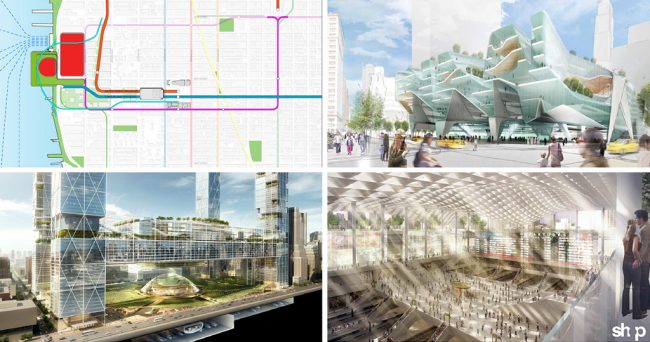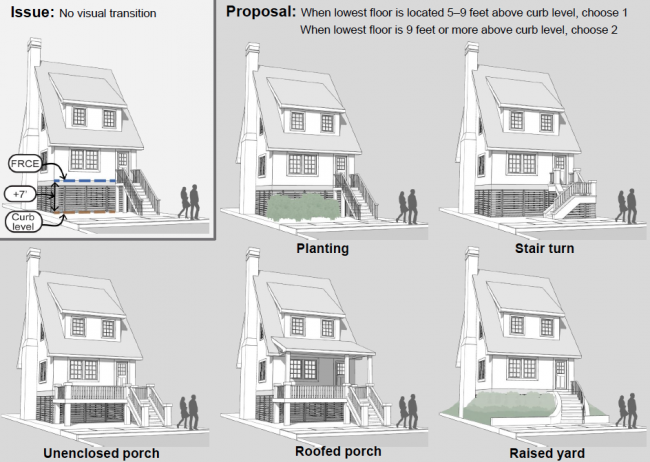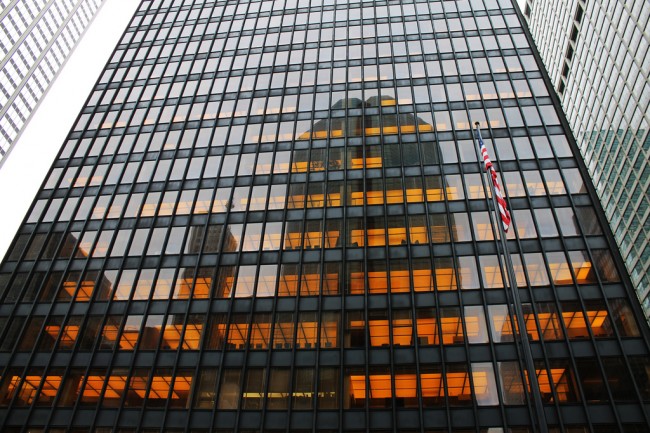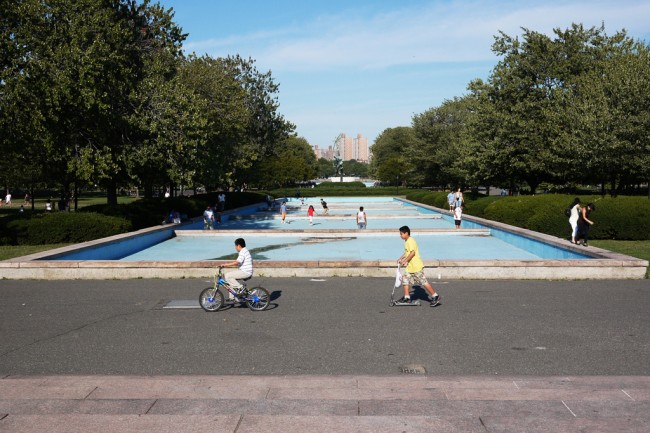
We are celebrating 15 years — and counting — of stories that are deeply researched and deeply felt, that build a historical record of what the city has been.
We are celebrating 15 years — and counting — of stories that are deeply researched and deeply felt, that build a historical record of what the city has been.

Four MAS commissioned proposals for the future of Madison Square Gardens, Clockwise from Top Left: H3 Hardy Collaboration Architecture, Diller Scofidio + Renfro, SHoP Architects, Skidmore, Owings & Merrill | Images courtesy of the architects, click names for slides of the presentation
FOUR VISIONS FOR PENN STATION
Amid the ongoing debate over the future of Penn Station and Madison Square Garden, four architecture firms presented their visions for the future of the arena and crucial transit hub on Wednesday. Sponsored by the Municipal Art Society (MAS), the release sought to show the potential in removing the Garden from above the cramped station, a cause MAS, the Regional Plan Association, Manhattan Borough President Scott Stringer, and New York Times architectural critic Michael Kimmelman have all taken up in recent months. Proposals range from SOM’s new green space four times the size of Bryant Park to Diller Scofidio + Renfro’s design for a sponge-like weave of platforms. Each suggests the difficult task of moving the Garden to a different location — including to a pier on the Hudson and above the Farley Post Office — and adding building square footage for mixed use. Watch the teams present their proposals online here.

Options for integrating elevations with the street | Image via NYC Department of City Planning
ELEVATING BUILDINGS
In preparation for future storms, owners of buildings that lie within FEMA’s updated 100-year flood maps must elevate their structures above the projected floodplain. The logistics of elevating multi-story buildings while still maintaining the character of the streetscape represents a significant challenge. Proposed zoning changes released by the Department of City Planning seek to do just that by requiring buildings to maintain a lower-level of windows or displays that dip into the floodplain so as not to present a blank facade to the street. These areas and those on upper levels dedicated to mechanical systems will not be counted against the building’s allowable size so owners can maintain the same amount of inhabitable space — and property value — as prior to necessary changes.
NYC, THE CITY-STATE
In an interview with Nancy Levinson for Places, David Burney, head of the City’s Department of Design and Construction, speaks about New York’s “strong mayoral” system and provides an overview of the climate change and aging infrastructure challenges, and opportunities, facing what he says might be “a de facto transition to a society dominated by economically and politically powerful cities — a contemporary version of the great city-states.” For more on the potential for cities to tackle climate change, see Shin-pei Tsay’s essay on UO from last September.

The Seagram Building, one of the relatively inefficient midtown office towers | Image via Jules Antonio
GREENING MIDTOWN OFFICE TOWERS
A new report by research and consulting firm Terrapin Bright Green investigates a crucial problem with much of the city’s iconic midcentury office towers — they are highly inefficient, with two possible solutions: retrofitting or demolition and replacement with new, highly efficient buildings. The report concludes that razing the inefficient glass boxes and replacing them with greener new construction would prove environmentally positive, though opponents of this approach say the report rests on the faulty assumptions that significantly taller buildings — as would be allowable proposed by the Bloomberg administration in the contentious Midtown East zoning change — would replace existing structures and that current building owners lack incentives to retrofit.
THE COMMUNITY OF A HASIDIC SUPERMARKET
A diversity of races, ethnicities, and socioeconomic classes co-existing within a neighborhood is a frequent goal for contemporary urban thinkers. WNYC takes a look at a potential downside of this diversity, or rather the potential upside to insularity, as demonstrated in a Hasidic Jewish supermarket in the heavily Jewish neighborhood of Borough Park, Brooklyn. Thanks to a tight community built around a strict set of customs, rules, and beliefs, many customers at the supermarket operate on an honor system, and the better-off members of the community often cover the financial shortcomings of their less wealthy neighbors. Take a listen to the segment above to learn more.

Flushing Meadows-Corona Park | Image via Ed Gaillard
PAYING FOR PARKS
The vastly different states of New York’s local parks, from the well-funded grandeur of Manhattan’s Central Park to the scruffiness of Flushing Meadows-Corona Park in Queens, demonstrate the complexities of current park funding. Many of the city’s iconic and well-maintained parks benefit from conservancies adept at drawing large donations from wealthy neighbors, while those in poor shape scrape by on a continuously decreasing budget from the City. Michael Powell of The New York Times challenges the advisability and sustainability of the status quo, while Daniel Squadron, an NY State Senator, calls for the creation of a Neighborhood Parks Alliance that would distribute 20% of wealthy park conservancies’ funds to poorly-funded ones.
EVENTS AND STUFF TO DO
PROCESS AND PROGRESS 5
In the final installment of its series Process and Progress: Engaging in Community Change, the Bronx River Arts Center presents work strategies employed by architects, artists, urban planners, neighborhood activists, and local youth to articulate and improve the environmental and infrastructure challenges that face the South Bronx. The exhibit, which opens tonight with a reception from 6–9pm, will run through June 22nd and features two participants familiar to UO readers: Brooke Singer, whose work visualizing Superfund sites was recently featured in Juliet Helmke’s review of eco-visualization strategies, and SLO Architecture, who spoke to us about their design and community work to reclaim the Bronx River.
BEYOND RESILIENCE: ACTIONS FOR A JUST METROPOLIS
Join planners, architects, designers, activists, and neighborhood activists on June 6th–8th to explore alternative, sustainable, and just ways of preserving and developing the metropolis at the conference Beyond Resilience: Actions for a Just Metropolis, hosted in part by Hunter College and the Pratt Institute. The conference includes workshops in communities around the city as well as a plenary featuring former Deputy Minister of Cities for Brazil Erminia Maricato, who will discuss lessons learned from Brazil’s urban social movements. Registration is open here.
CITY-WIDE MEETING ON GREEN INFRASTRUCTURE
The City’s Department of Environmental Protection will present the current and upcoming projects in its Green Infrastructure program in a meeting on June 10th from 6:30–8:30pm at St. Francis College in Brooklyn Heights.
The Roundup keeps you up to date with topics we’ve featured and other things we think are worth knowing about.
The views expressed here are those of the authors only and do not reflect the position of The Architectural League of New York.